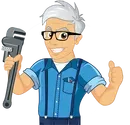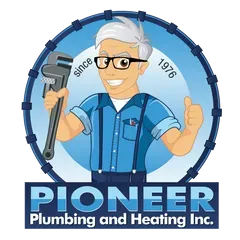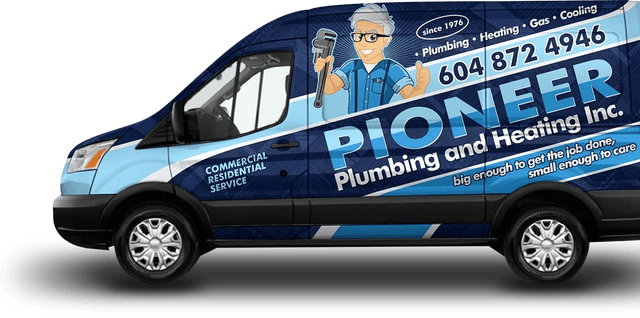Furnace Service, Repair & Installation
24 Hour Emergency Furnace Service
Whatever your needs, be it emergency service a furnace tune-up or regular maintenance, you can count on us for quality service and competitive rates. A well maintained furnace will last longer and save money on energy bills.
Familiar with all brands of furnaces, our furnace service technician will correct any problem and get your furnace running at peak performance again. We are licensed to work on gas-fired and electric furnaces. All furnace repair service work we do adheres to manufacturer specifications, and we put our personal stamp on everything we do. Your peace of mind is top priority.
If your furnace has reached the end of its life expectancy we can look at options for a new furnace installation. Our furnace technicians are up to date on the latest innovations and will be happy to calculate the best heating system for your home and needs.
Furnace Installation & Removal
When your old furnace is on its last legs, call us to go over options. On occasion there are discounts available from Fortis that can be a good match for you, and we'll know what's available at the time. High efficiency furnaces have a number of options, so we can help you with that. We will also remove and dispose of the old furnace, making it easier to deal with.
Your home will be comfortably warm with a new furnace installation with our team of heating experts. Start to finish we'll take care of everything from planning to disposal. If you are wondering about furnace service cost, please visit our rates page.
Short List of Brands
- Lennox furnace service
- Carrier furnace service
- Bryant furnace service
Call any time during office hours to arrange a consultation
Check These Things Before Calling Us
If your furnace isn’t working, there are a couple things you can check before calling us about furnace repair work. Occasionally we arrive at a home only to find the thermostat setting had been lowered, so that is what you should check first.
If the circuit breaker for your furnace has tripped go ahead and reset it, but if it trips again you have a problem that needs to be dealt with by a professional. That goes for the pilot light too: if it goes out, again and again, you need our help.
It doesn’t matter what brand of furnace is in your home, or whether it uses gas or electricity. Our certified technicians can handle them all, except for oil-fired furnaces. Gas furnace service and cleaning is our specialty and we've help countless families sleep better knowing their heating system is working properly and energy efficient. One thing we like to suggest is to set up a regular furnace maintenance program so you can enjoy a clean, safe heating season and save money on fuel bills.
Forced-air furnaces are reliable, but cleaning and regular maintenance is required to keep energy costs down. Since 2010 only high-efficiency furnaces have been installed in Canadian homes. They are technological wonders but far more elaborate than the older furnaces that many of us grew up with. Our furnace cleaning service and furnace maintenance service is done by trained heating technicians.
Scheduling annual furnace maintenance will greatly reduce the likelihood of an emergency furnace repair situation and your furnace will operate more efficiently, reducing your heating bills. Also, an efficient furnace is healthier for your family. We focus on helping you avoid an unnecessary furnace replacement by keeping it working at peak efficiency.
- Annual maintenance of forced-air furnaces includes:
- Thorough diagnostic check
- Furnace blower removed and cleaned
- Blower compartment cleaned
- Furnace, burners, venting/flue pipe and heat exchanger cleaned
- Blower motor checked, cleaned and lubricated (if necessary)
- New filter installed
- Furnace ignition and blower operation tested
Your Furnace
A furnace, referred to as a heater or boiler in British English, is heating equipment used to heat up an entire building. Furnaces are mostly used as a major component of a central heating system. The name derives from Latin word fornax, which means oven. Furnaces are permanently installed to provide heat to an interior space through intermediary fluid movement, which may be air, steam, or hot water. Heating appliances that use steam or hot water as the fluid are normally referred to as a residential steam boiler or residential hot water boiler.
The most common fuel source for modern furnaces (natural gas) in North America and much of Europe is for natural gas furnaces; other common fuel sources include LPG (liquefied petroleum gas), fuel oil, wood and in rare cases coal. In some areas electrical resistance heating is used, especially where the cost of electricity is low or the primary purpose is for indoor air quality.
Modern high-efficiency furnaces can be up to 98% efficient and operate without a chimney, with a typical gas furnace being about 80% efficient. Waste gas and heat are mechanically ventilated through PVC pipes that can be vented through the side or roof of the house. Fuel efficiency in this type of furnace is measured in AFUE (Annual Fuel Utilization Efficiency). Furnaces primarily run on natural gas or electricity.
The Furnace Room
A furnace room is a mechanical room in a building for locating a furnace and auxiliary equipment. Such a room minimizes the visual impact of the furnace, pipes and other gear. A modern compact furnace for a single family home can readily fit into a small closet. However, care must be exercised to provide adequate ventilation as the exterior of the furnace unit emits a significant amount of heat, and a natural gas or any other fueled furnace will need an adequate amount of combustion air.
A garage should never be used as a furnace room for a number of reasons. Air leakage around the connecting ductwork and other needed passages could act to transport potentially dangerous contaminants (including carbon monoxide) from the garage into the main body of the house, ductwork and other passages between the garage and the living areas of the house could be breaches of the required fire resistant barrier between these two areas, a furnace or other such appliance would need to be protected from potential vehicle impact by bollards or some other means, and any ignition source in a garage is required to be at least 18 inches above the floor level due to the potential of explosive gasoline vapors in any garage. In the picture, the airflow is from bottom to top, with an electronic air filter on the bottom, followed by a natural gas high efficiency or condensing furnace (98% efficient) in the middle, and air conditioning coils on top.
DIY Furnace Maintenance Could Save A Repair Bill
Save money and increase your heating system's energy efficiency and comfort by following these simple steps to keep your furnace in tip-top condition.
For a DIY furnace tune-up, first flip the electrical power switch to “Off.” Remove the combustion chamber door by lifting up and pulling it out, and remove the burner flame cover (if you have one). It’s usually held in place by two screws.
Burner Flames
Look at the burner flames. The flames should be fairly even and blue. A yellow flame indicate dirty burners. (Don’t breathe on the flames because the extra oxygen will also make them turn yellow.) Don’t play with the flame sensor or adjust the burners yourself. Call in a pro.
Vacuum
Vacuum everywhere you see dust. While everything is open, use a flashlight to look for signs of soot (fine black powder), which often indicates poor combustion. Lift off the lower door (blower door) and vacuum the blower compartment.
The Blower
Remove the blower (also called a squirrel cage) in order to clean it. If you have a control panel in front of the blower, two screws will loosen it and you can let it hang. Next, using a 7/16-in. socket and ratchet, remove the two bolts that hold the blower in place, then gently lift it out.
Clean the blower blades thoroughly with a vacuum and small brush. Take care not to stress the wiring or disturb the counterweights that will be on the fan blades. If you can’t clean the blower thoroughly, don’t clean it at all; you could throw it off balance.
The Filter
Change dirty filters every one to three months. A low cost fiberglass filter will adequately protect the blower and blower motor. If you want to install a more expensive, high-efficiency filter, check the owner’s manual for the manufacturer recommendations. If in doubt you can always call us for professional heating service.
There's a lot more involved in furnace maintenance services, so if you would like to read the full article click here for that.
It is recommended to have your furnace serviced every year. We provide great customer service, so call today and set up an appointment.






